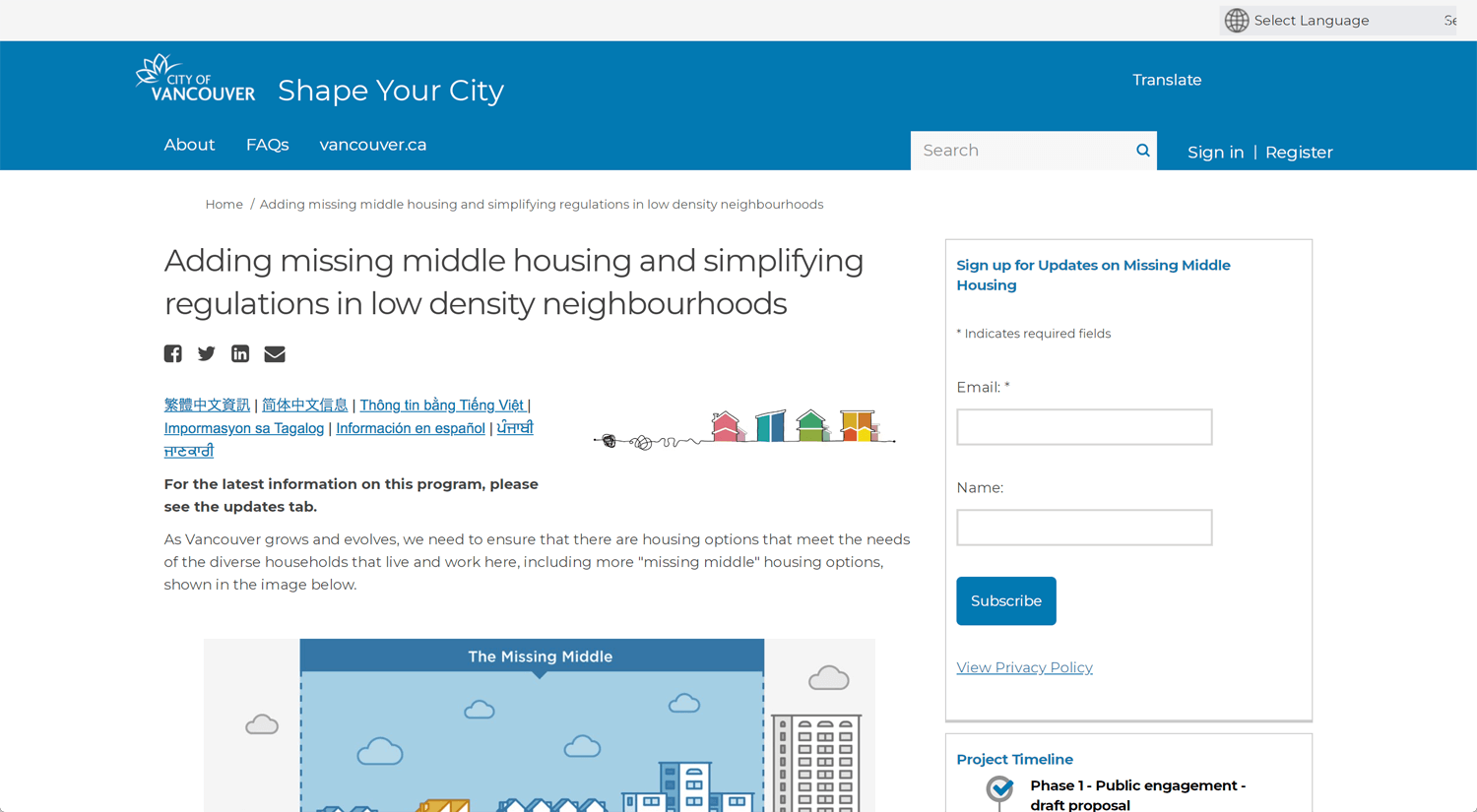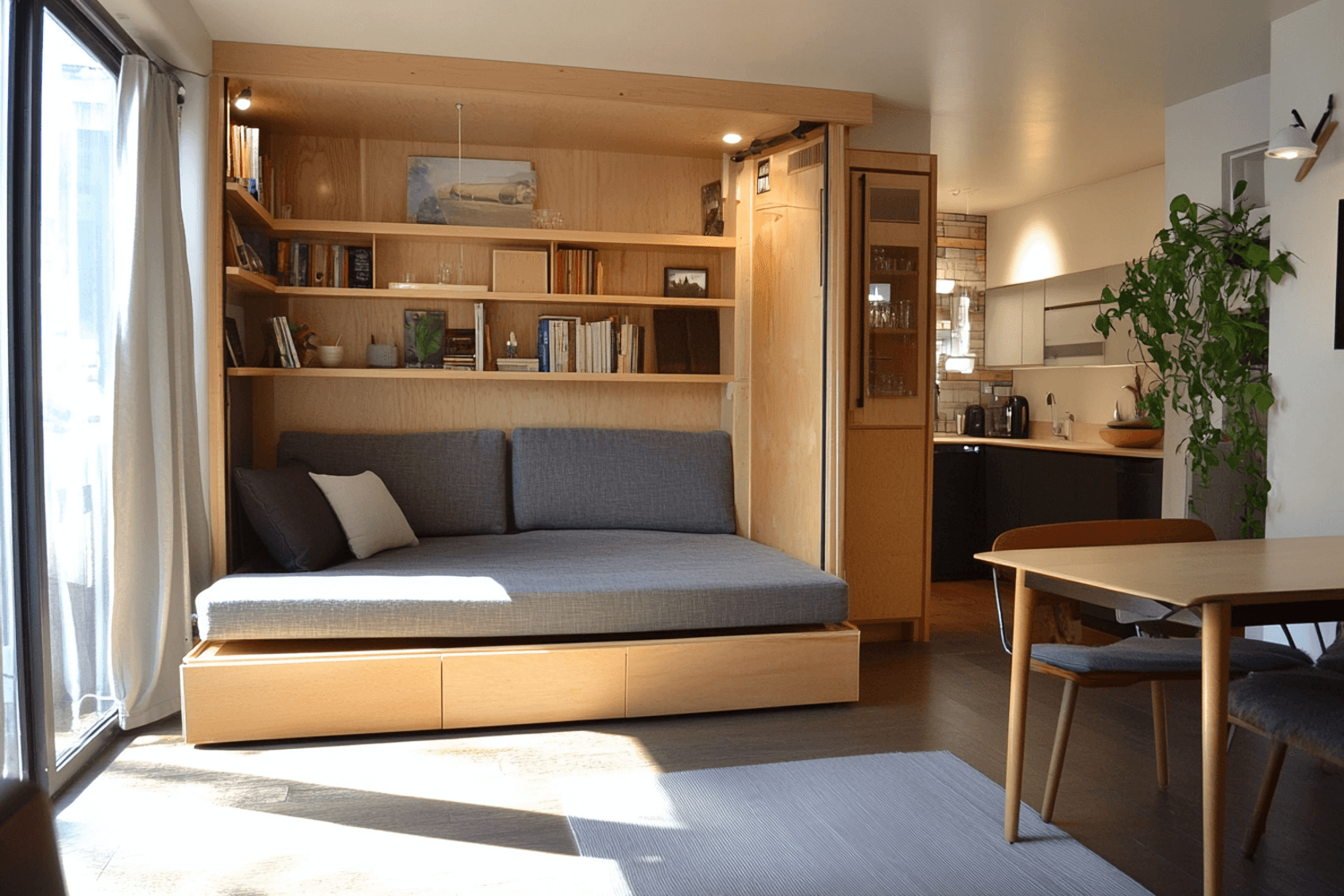The Missing Middle in Vancouver, BC: How It Can Solve the City’s Housing Crisis
Vancouver, BC, is well-known for its natural beauty, vibrant culture, and soaring real estate prices. For years, the city has been grappling with a housing crisis that has made it increasingly difficult for many residents to find affordable, family-friendly homes. While luxury condos and high-density developments dominate the skyline, and single-family homes remain out of reach for most, there’s a crucial gap in the city’s housing options: the “missing middle.”
This blog will explore how missing middle housing could be the key to solving Vancouver’s housing dilemma and shaping a more inclusive, affordable future for the city.
©City of Vancouver: Vancouver’s Missing Middle Explained
What is Missing Middle Housing?
The term “missing middle” refers to a range of housing types that fall between single-family homes and large apartment buildings. These include duplexes, triplexes, townhouses, and low-rise apartment buildings—housing options that are neither sprawling nor towering, but instead strike a balance between density and livability.
In many cities around the world, missing middle housing is a critical component of urban planning, offering a diversity of home types to accommodate different needs. It provides space for families, individuals, and retirees without forcing them into either cramped apartments or expensive detached homes. In Vancouver, however, much of this middle ground has disappeared, squeezed out by zoning laws that favor either single-family homes or high-rise condos.
©City of Vancouver: Adding missing middle housing and simplifying regulations in low density neighbourhoods
The Benefits of Missing Middle Housing for Vancouver
Expanding the availability of missing middle housing could provide a host of benefits for Vancouver:
- Increased Affordability: By offering a range of housing options, the missing middle can help bridge the affordability gap. Duplexes and townhouses provide more space at lower prices than single-family homes, making them attractive options for young families and middle-income earners.
- Preventing Urban Sprawl: Vancouver’s growth has often pushed development into surrounding areas, increasing commute times and putting pressure on infrastructure. Missing middle housing helps create density without high-rises, allowing the city to grow inward rather than outward.
- Environmental Sustainability: Denser neighborhoods reduce car dependence by encouraging walking, cycling, and public transit use. By creating a compact urban form, missing middle housing supports a more environmentally sustainable city.
- Stronger Communities: Townhouses, duplexes, and low-rise apartments often promote a greater sense of community than high-rise towers. They create walkable, vibrant neighborhoods where residents interact more and have access to local amenities like schools, shops, and parks.
Challenges to Implementing Missing Middle Housing
While the benefits are clear, implementing missing middle housing in Vancouver comes with its own set of challenges:
- Zoning Laws and Restrictions: Much of Vancouver’s residential land is still zoned for single-family homes, which limits the development of middle-density housing. Changing these zoning laws is a complex process, often met with resistance from various stakeholders.
- NIMBYism (Not In My Backyard): Community opposition to densification is a significant barrier. Many residents of single-family neighborhoods fear that introducing duplexes or low-rise buildings will disrupt their way of life or lower property values, leading to resistance against zoning changes.
- Infrastructure and City Planning: Accommodating more residents in areas with missing middle housing requires upgrades to existing infrastructure. This means ensuring access to adequate transit, schools, and utilities, all of which must be factored into city planning.
What’s Being Done in Vancouver?
The City of Vancouver has recognized the need to address its housing crisis, and missing middle housing is increasingly part of the conversation. Efforts are underway to revise zoning policies and encourage the development of more diverse housing types.
Some notable initiatives include:
- City-Wide Planning Efforts: Vancouver is exploring rezoning options to allow for more multi-unit dwellings in neighborhoods that were previously restricted to single-family homes.
- Pilot Projects: Several areas in the city are testing new developments that include townhomes and low-rise apartment buildings to see how they fit into the existing urban fabric.
- Success Stories: In some neighborhoods, small-scale developments of duplexes and triplexes have already been built, showing how missing middle housing can blend into established areas without drastically altering their character.
How Missing Middle Can Shape Vancouver’s Future
If Vancouver fully embraces missing middle housing, the city could see profound long-term benefits. By diversifying housing options, the city can better accommodate a wide range of residents, from young families to retirees, making Vancouver a more inclusive place to live.
Over time, this could lead to:
- Greater housing affordability: A broader mix of housing options will help stabilize home prices and create more opportunities for home ownership and rental options at different price points.
- Sustainable urban growth: Missing middle housing supports a more compact and environmentally friendly urban landscape, reducing the pressure on surrounding suburban areas.
- Vibrant, walkable communities: With increased density in residential areas, local businesses, parks, and amenities can thrive, creating neighborhoods that are more active and connected.
For missing middle housing to truly take root, it will require collaboration between policymakers, developers, and residents. Vancouverites will need to embrace the idea that density doesn’t always mean high-rise condos—sometimes it means the gentle densification of the places we already call home.
Vancouver’s housing crisis is complex, but missing middle housing offers a promising solution that addresses both affordability and sustainability. It’s time for the city to rethink its zoning laws and for residents to recognize the benefits of embracing more diverse housing options.
If you’re a Vancouver resident, consider getting involved in the conversation. Attend city planning meetings, support local initiatives, and advocate for the kind of housing that can make Vancouver more livable for everyone. The missing middle is more than just a solution to the housing crisis—it’s a way to ensure Vancouver remains a vibrant, inclusive, and resilient city for generations to come.






